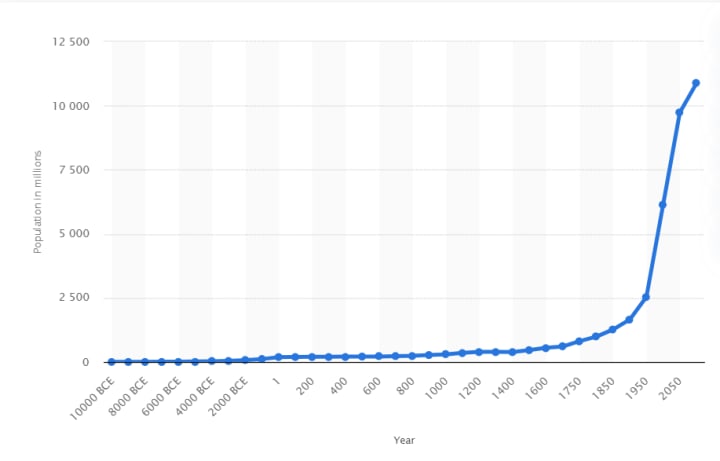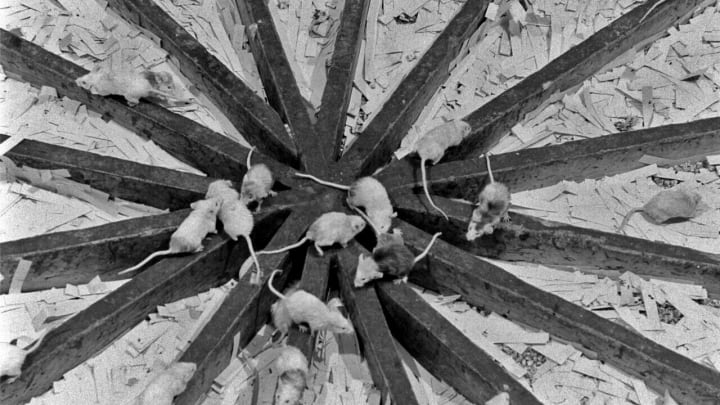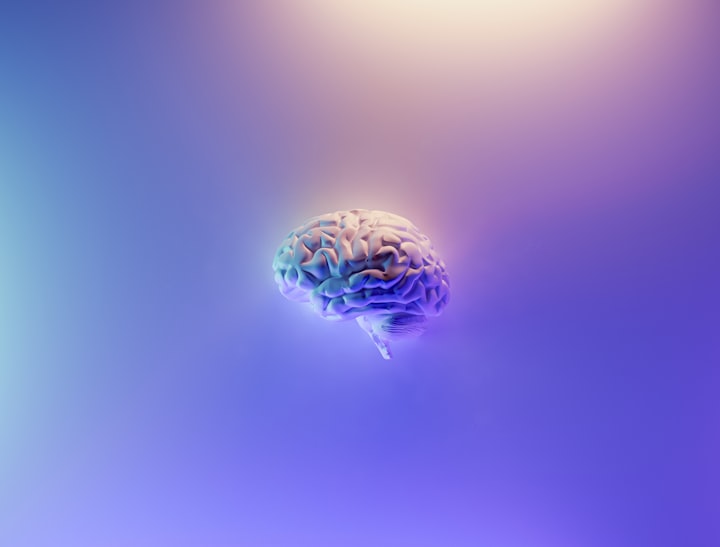Can overpopulation drive us to extinction?
Universe-25 seems to know the answer

Earth is currently home to 7.9 billion humans. This is an incredible feat considering the fact that just 70,000 years ago, the human population was on the verge of extinction with no more than 1000 of us left. However, thanks to the diligent use of our growing brains and defensive aggression, we made sure that we would not end up as another fossil under the rocks
It took humans 2 million years to reach its first-ever 1 billion mark. A milestone in itself. The second billion was achieved in mere 130 years (1930), the third billion in 30 years (1960), the fourth billion in 15 years (1974), and the fifth billion in only 13 years (1987).

This exponential growth was unbelievable yet alarming. For the first time in history, our concern wasn't extinction but overpopulation. The resources on earth are finite and with the increasing addition of people, a shortage crisis and imbalance were on a fast-approaching horizon
The governments, scholars, scientists and researchers alike shared the gravity of the situation. While policies and schemes were set in motion to curb the growth, efforts were made to understand the social, economical and biological effects of overpopulation
John Bumpass Calhoun was one such ethologist who tried to understand the consequences of overpopulation in a series of experiments which would later come to be named “Universe-25”.
For this experiment, Dr Calhoun chose the Norwegian mice as his subjects. Apart from being social creatures, mice attain sexual maturity in just 7 weeks after taking birth and are driven by a reproduction frenzy. This allowed Dr Calhoun and his researchers to run the experiments at a faster pace

The mice were put in “mouse-utopias” - 101-inch by 101-inch enclosures with an abundant supply of food and water and protection from predators. The result was conceivably the unfettered growth of the population. A set of 4 mice that were released into the enclosure had grown to a bustling colony of hundreds of mice in mere months. But things started to take the wrong turn as the experimentation prolonged
As the observation duration hit 11 and half months, the reproduction rate of the mice started declining significantly. When the population reached the 600 mark, a social order started to take shape. The male mice would be seemingly divided into two orders. The Alphas and the wretches, And with time, the behaviour disparities between alphas and wretches status would become more pronounced.
While alphas started becoming bigger and more aggressive, the wretches on other hand found themselves outcast and dormant. The alphas started to commandeer the females in unprovoked acts of hooliganism. They would increasingly attack other males, resulting in barbaric and bloody fights. Cannibalism would also become more prevalent even with the abundance of food, as the victor mouse would festoon on its dead rivals to mark its ascension of power
On contrary, with no purpose, the wretches started to lose their interest in mating or upbringing the offspring, often abandoning their mates and living off alone. This led the females to fend for their nests. Consequently, many females started to get irked by the increasing responsibility and adopted more aggressive forms of behavior, which would sometimes spill over into violence toward their young. Others abandoned their litter or completely pulled out of mating
Conceivably the infant mortality rose to a staggering 90% as more and more mothers started disavowing their newborns. As the population started to fall, amidst all the bloodbath and barbarism, a younger generation of mice started to attain maturity which seemingly had no appetite for proliferation or mating. These were termed “beautiful mice” as they spent their waking hours eating and grooming themselves.

Born aloof of the family bond or normal ties, these mice were the proverbial saints, averse to all the violence or pleasures of the society. They would not fight for their territory nor would mate with the females. This in turn led to the population that majorly consisted of “beautiful males” and “Isolated females”
And sadly, there is a live example of this happening in human society as well. After a population boom, the Japanese population has been declining for years now. In fact, the Japanese population consists of more aged people than children as more and more Japanese keep getting disillusioned about parenthood and family
By the 560th day, the mortality rate touched 100% indicating the population was no more growing, rather it would start shrinking. As fewer and fewer mice continued mating, the extinction of the population started to become an eventuality. On the 920th day, the last mouse was conceived. And soon enough the entire population of mice was wiped off.
Dr Calhoun would proceed to perform the experiment 25 times, Hence the name universe-25 and each time, he would got similar results. The entire population of the mice would be eradicated each time without any external factors (such as diseases, predators or due to elements of nature) but due to fracture in the social order
These observations were summarised in his essay titled "Death Squared: The Explosive Growth and Demise of a Mouse Population “ which over the years has acted as a model to understand the grim reality of social collapse due to overpopulation
You might put a point though that we are not mice and this might not be the case with us when we get overpopulated. Well, a valid argument but to put it in context, mice are much simpler beings compared to humans. We on the other hand are sophisticated beings with varied emotions. And given our history of creating social orders and classifications, the genesis of a new social hierarchy doesn't look like an impossibility. In any means, it delivers that message a population overload could lead to collapse of social structure which eventually would sound the death bells of our race
Still don't agree, what is your hypothesis then?





Comments
There are no comments for this story
Be the first to respond and start the conversation.